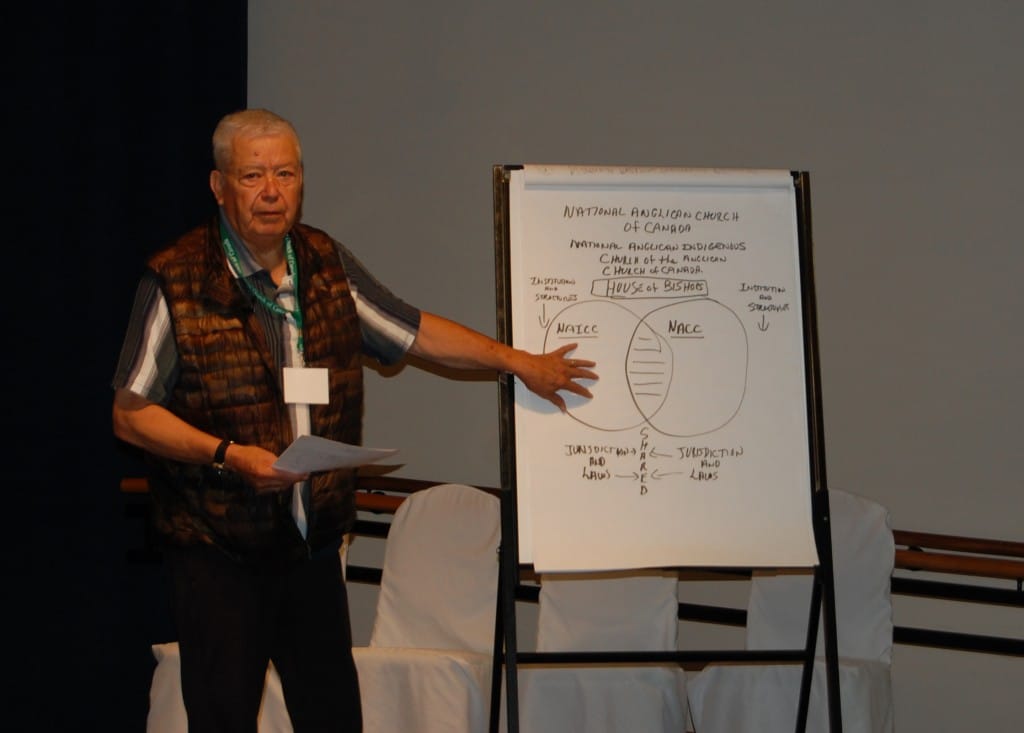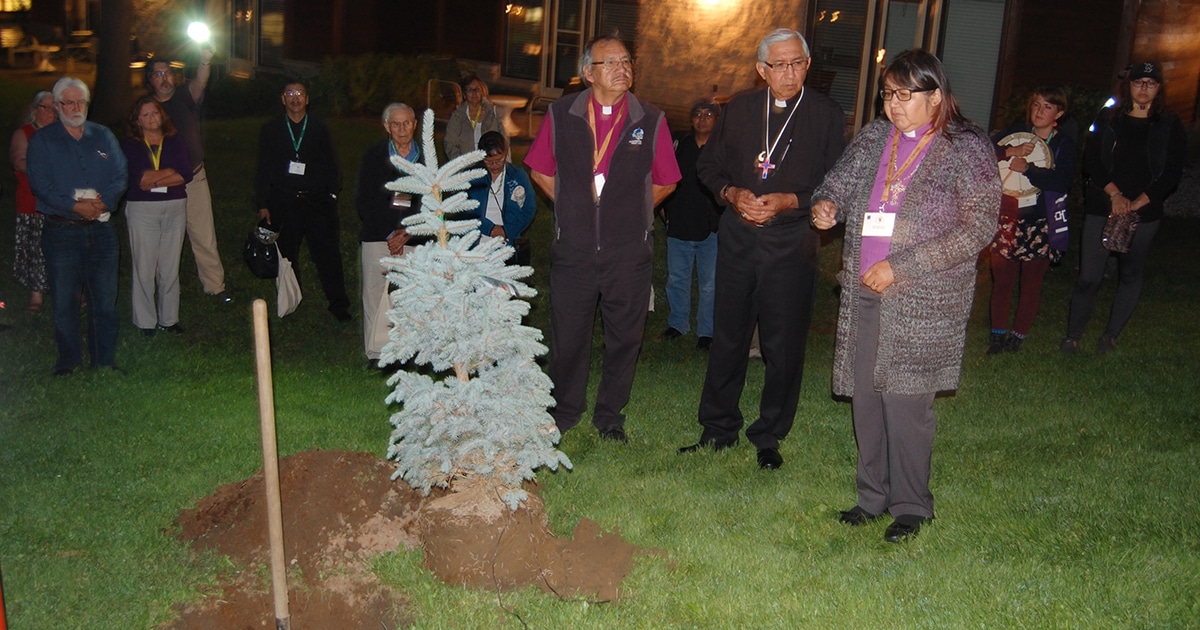As the cool evening air settled, Sacred Circle participants congregated around a small evergreen tree ready to be planted as part of a tradition at the end of the gathering.
Before the tree was planted, Bishop Lydia Mamakwa of the Indigenous Spiritual Ministry of Mishamikoweesh offered a few words.
“Planting a tree is an occasion for us to learn from,” Bishop Lydia said. “This kind of tree, it never loses its branches. It’s always green.”
“Our God wants us to be like this tree,” she added. “He wants us to always be growing … May this be an illustration for our lives that we may be like this tree in our spiritual lives—that the life may never leave us, the life that our Creator who died on the Cross for us gives us.”
It was a fitting end to a momentous day, when Sacred Circle delegates planted the seeds for a historic move towards self-determination by endorsing a draft plan to establish a fifth province and structure for the Indigenous Anglican Church as part of the Anglican Church of Canada.
The mood of the hall was electric that afternoon as Sol Sanderson, a member of the Primate’s Commission on Discovery, Reconciliation and Justice, presented a draft statement outlining the proposed structure for a fifth ecclesiastical province.

In this draft proposal, the province’s offices would include a National Anglican Indigenous Primate—retaining the office of National Indigenous Anglican Bishop—as well as regional bishops, area mission bishops and ministry at the community level.
The National Indigenous Anglican Church would have both shared and separate areas of jurisdiction with the existing structure of the Anglican Church of Canada, Canon XXII being amended to accommodate the transition.
Excitement surrounding the draft statement was palpable. One Sacred Circle delegate noted his trepidation at the prospect, due to the fact that it was a challenge that took delegates out of their comfort zone.
But, he added, “It’s only when we step out of our comfort zone that we grow,” and expressed his strong willingness to support the document. Others also spoke in favour, and a consensus among delegates resulted in the draft statement being forwarded to the new membership of the Anglican Council of Indigenous Peoples.
Reflections on the Port Elgin statement
As an official listener and reporter of the 2015 Sacred Circle, the draft statement appeared to me as the appropriate culmination of a week during which I had experienced first-hand the pride, faith and strength of Indigenous Anglicans continuing their journey towards self-determination, as well as the inspiring solidarity of non-Indigenous Anglican delegates in support of that goal embodied by the Primate’s sermon during the opening Eucharist.
Endorsement of the Port Elgin statement built on decades’ of work and momentum towards self-determination, while marking a qualitative change in the ever-evolving relationship between Indigenous people and the Anglican Church of Canada. Delegates at the 2015 Sacred Circle have thrown down the gauntlet and endorsed a concrete vision for Indigenous self-determination within the wider church, and the prospect of its realization is tremendously exciting.
Fear of change is a common sentiment among human beings. We often gravitate towards the familiar, even when that change is likely to be positive. Some Anglicans might experience trepidation at major changes to a church structure they have grown accustomed to.
Yet no worries could be more misplaced. What I saw in Port Elgin over the last week was a bond between Indigenous and non-Indigenous Anglicans that had never been stronger, a mutual understanding that had never been greater, and an unprecedented will and resolve for Indigenous Anglicans to express their faith in a manner rooted in their own rich cultural traditions.
Self-determination for Indigenous Anglicans can only lead to a stronger Anglican Church of Canada. May the strengthening of bonds between Indigenous and non-Indigenous Anglicans lead to new life and a growing evergreen church rooted in that mutual understanding and respect.
Interested in keeping up-to-date on news, opinion, events and resources from the Anglican Church of Canada? Sign up for our email alerts .

